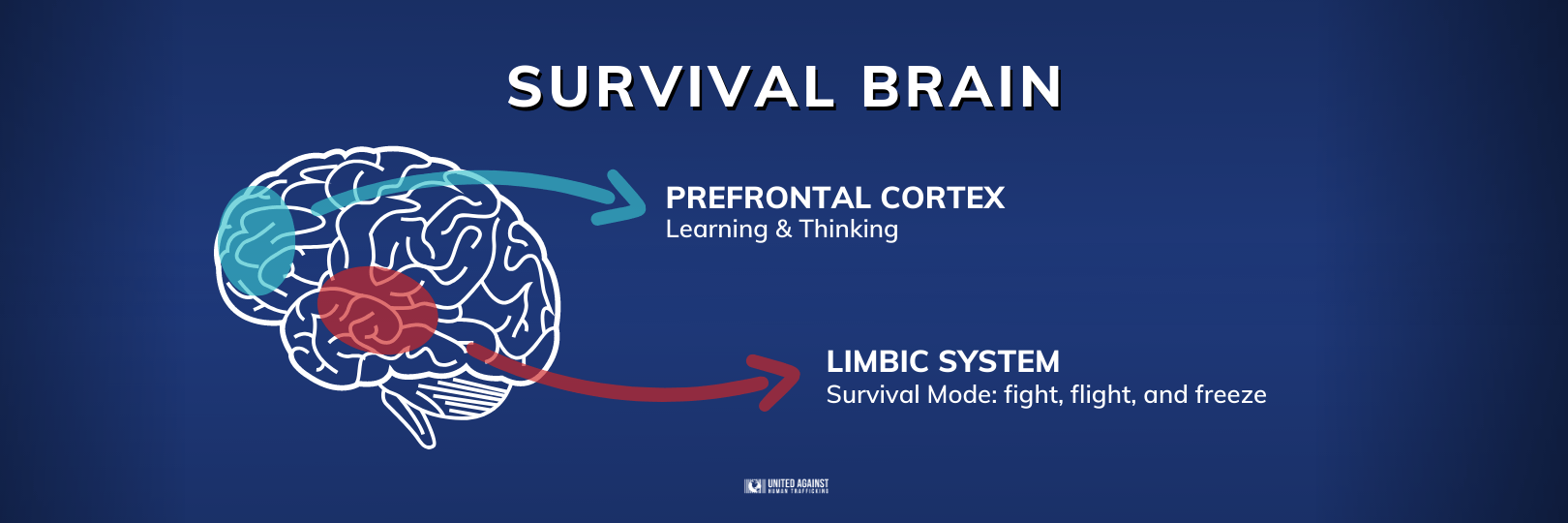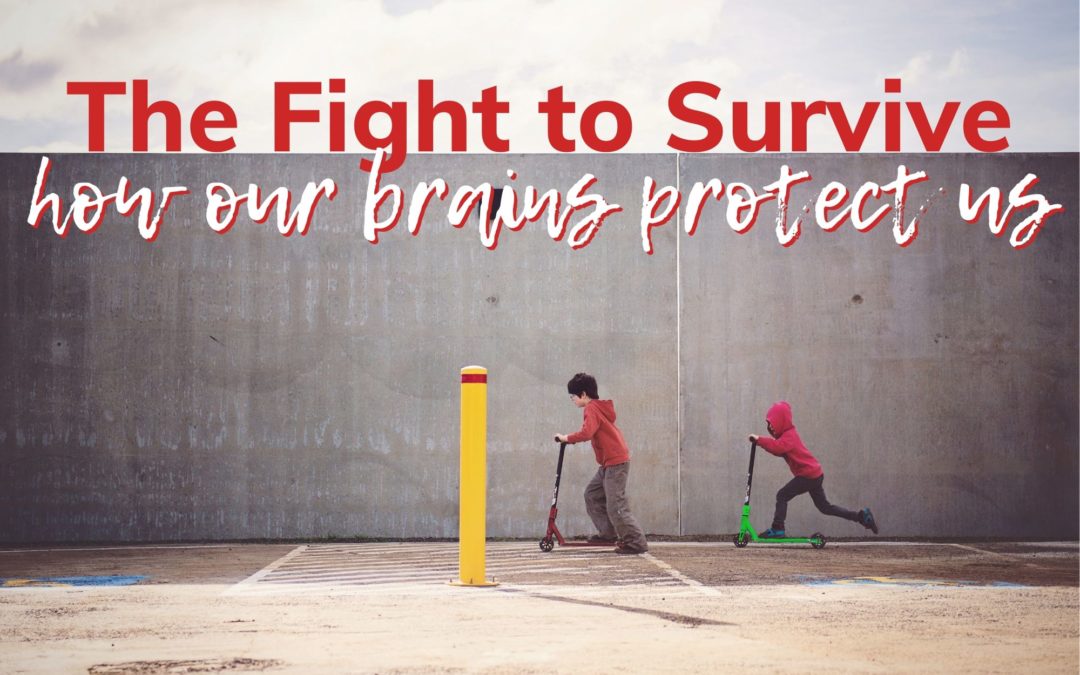Just a moment before, my hair flowed behind me in the cool wind. My fingers wrapped around the handlebars, one foot planted on the deck, the other launching me forward along the pavement. I trailed a few feet behind my older brother as he expertly crossed from one half of the driveway to the other on his blue scooter. I wanted to keep up and pulled my right handlebar back slightly.
In an instant, my front wheel caught in the concrete crack. The back wheel swung out as both the scooter and I toppled over.
Involuntarily, my hands released the handlebars and flew out in front of me, catching the full weight of my body as I let out a scream.
My wrist was fractured, but thankfully everything else – my head and torso – was unscathed.
A healthy response
Everyone experiences these reactions:
You might feel rage course from your ankles to your head, heating every inch of your body, pressure building with every inhale until a deep growly yell erupts. That’s fight.
You might lose the ability to sit comfortably, fidgeting your fingers, squeezing your toes, readjusting your posture, as nausea slams your gut. That’s flight.
You might numb your senses to your surroundings, glazing your eyes and ears, racing through every terrifying scenario in your mind, yet incapable of uttering a word or twitching a finger. That’s freeze.
These are natural, normal, healthy responses to an abnormal, uncomfortable, stressful situation.
stuck in survival mode

The repeated trauma of being trafficked keeps brains stuck in survival mode. Everyday situations are dangerous. Choice is pushed aside to make way for instinct. This is trauma, and it doesn’t go away.
You try to help, and they respond with distrust and anger.
Social workers try to find a survivor a place to sleep and are met with yelling.
A loving foster family will wake up to find the boy they helped out of trafficking ran back into the arms of his vicious trafficker in the middle of the night.
Detectives ask essential questions to bring a trafficker to justice, while the survivor stares defiantly, unwilling to speak.
While in survival mode, the brain shuts down to its most necessary functions. It rejects new information and refuses to store it long-term. We might remind a survivor about their upcoming group therapy and they’ll be excited to go – but they simply can’t remember the appointment.
Often, a survivor’s abuse began early – at 11 or 12 years old – and continued for years. Their bodies grow, but their brains can’t mature – they’re not only stuck in survival mode, but in some ways stuck in the developmental level of a pre-teen.
Overcoming this constant survival-mode mentality is one of countless obstacles that survivors experience every minute of every day.
Their highjacked brains fight their own healing.
Healing the brain is possible. By extending compassion, and understanding the brain’s response to trauma, we can begin to offer solutions. By reading this blog right now, you’re helping us normalize the responses that seem simply aggressive without context. What else do you need to know?
The first step of healing is to name and explain what happened to their brain – how the trauma physically changed their decision-making process.
Once they understand what happened to their brain, they can learn coping strategies to process stressful environments. Through breathing, mindfulness, and meditation, synapses in the survivors’ brain actually rewire, which allows them to regain control over their reactions. These tools empower survivors to choose a specific action rather than controlled by an impulsive reaction.
We explain these normal responses to trauma when working with men, women, children, and families during our Real Talk Program. There, we share the many different coping tools that calm the brain instead of living in a perpetual survival state. But it’s more than a one-way training about trauma; it’s a meaningful conversation about the participants’ lives.
Only the survivor can rewire their own brain, but we offer the support they need to fully heal.






